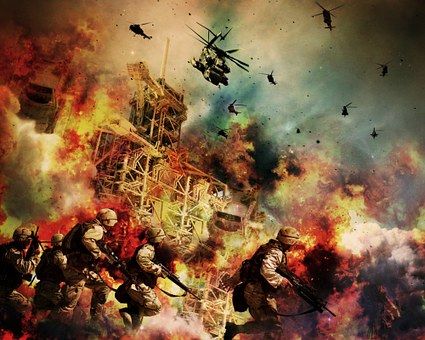Demonstrating Power Through Sama, Dana, Bheda, Danda (Part-2)
Jun 06, 2019 • 232 views
·The third technique is that of BHEDA- Creating division
This method involves sowing dissension in the enemy/opposite party’s rank leading to a division amongst them. The intention is to weaken the opposite party by turning the members or allies against each other. For the smooth running of any kingdom/ political party/organisation, it is very essential for everyone to trust each other and work effectively as a team. Trust is the key element in any alliance. By exercising ‘bheda’ it is this trust and cooperation within the enemy’s camp which is intended to be destroyed. The most effective way of ensuring bheda or division is through the creation of suspicion in the minds of members against each other. It can be practised through sowing seeds of rumour in the enemy’s ranks. The splitting up of the opposite party will incapacitate it and it would become easier to exploit it.The most effective example of Bheda is the ‘Divide and Rule’ strategy employed by the British rulers in colonial India. In this case, the British were the people in power and the Indians were considered as the enemy party. As per the British strategy, the Indian Subcontinent was divided into smaller, more manageable parts so that it not only became convenient to rule them but it also ensured that the country inability to unite as a whole to fight against the imperial power.
Example- Since both explaining and granting, favours failed to have any impact on Mr X. His superior now employs the method of ‘Bheda’. When the time comes for the annual company review, the superior gives Mr.X very low rating as compared to his colleagues who were awarded good reviews. Thus, a division was created between Mr.X and his colleagues.
The Superior might also warn him of dire consequences if Mr X does not mend his ways. Here Bheda can be seen as a “threat” -that if the work is not done then it would inevitably lead to some serious action i.e. Danda (the last stage). Thus, Bheda is a way of conveying that –We are not willing to, but we do possess the ability to enforce Danda if the circumstances demand. In this sense, Bheda can be interpreted as showing the stick whereas Danda is the actual usage of the stick

·The Ultimate Technique- Danda (Employment of Force)
Diplomacy is aimed at preventing the application of force. It is strongly recommended to avoid implementing this technique. Therefore it is only after the failure of the mechanisms of Sama, Dana and Bheda, that one has to resort to Danda. Danda is considered the last option because its application would mean“destruction of the enemy, his property or liberty (plunder, harassment and death)”[2] Therefore Danda denotes a state of total annihilation and is considered the lowest form of power.

Example -Since Mr X did not perform the assigned tasks and the methods of Sama, Dana and Bheda employed by his superior failed to have the desired outcome. Therefore, the superior had to ultimately fire Mr X i.e. utilization of Danda.
The usage of one or two of these techniques as a form of implementing power are ideal in certain situations and do not require the application of others. Chanakya also suggests that in order to ensure that these diplomatic measures yield success one should use them in combination since “different methods mutually reinforce each other.”
The four methods of diplomacy played a crucial role in the great epic, Mahabharata. Lord Krishna, acting as the envoy of Pandavas, deployed all of them in the Kingdom of the Kauravas in an attempt to avert war. Since all three methods failed, the method of Danda had to be employed which lead to the Battle of Kurukshetra - only because a man refused to part with materialistic wealth and went to war with his cousins.
Diplomacy is an essential basis for exercising power. It is the quality of Diplomacy used which plays a major role in determining a nation’s power in relations to other nations. Thus, efficient diplomatic methods are required to exhibit power. In such a scenario the methods of Sama, Dana, Bheda, Danda, though ancient, have proved effective, substantiating the fact that the power of diplomacy is superior to all the other sources of power.
References :
[1]“The Four Upayas of Hindu Diplomacy” in The Indian Year Book of International Affair(1954). Bhaskaran,R.
[2] “ The Arthashastra” by Chanakya. Ref.{2.10.56}
